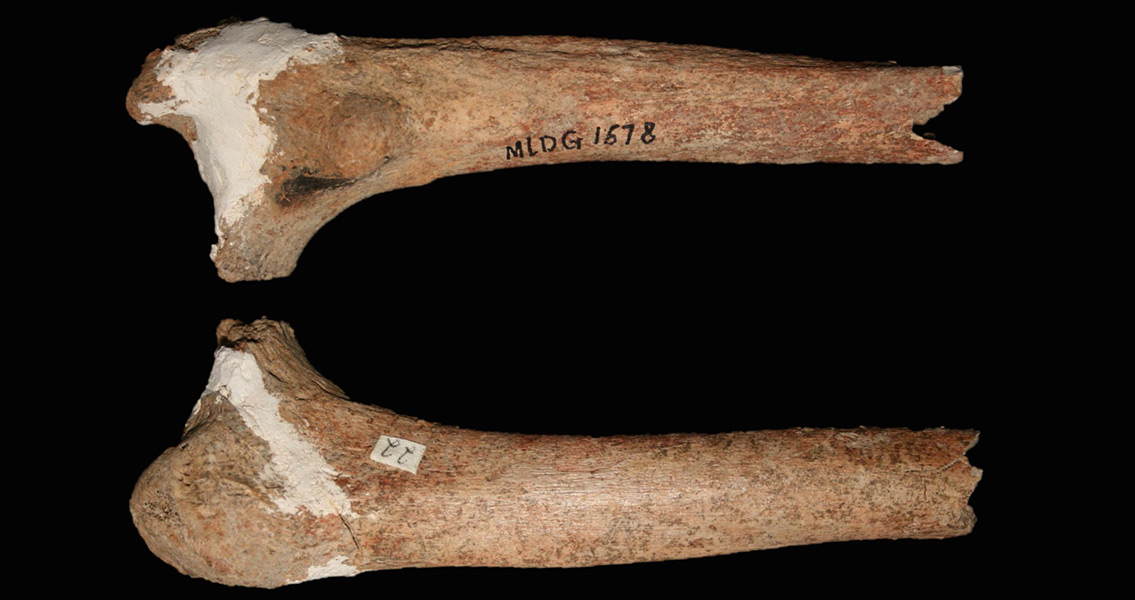<![CDATA[The analysis of a partial 14,000-year-old thighbone has experts wondering if ancient and modern humans lived in Asia at the same time. The bone was recovered in Maludong (Red Deer Cave), Yunnan Province, in 1989. The existence of the Red Deer Cave people was first reported after an earlier analysis of skull bones discovered at this site and another in China by the same team of researchers in 2012. The thighbone includes only the upper half of the femur without the top of the bone which would have been part of the hip joint, according to associate professor from the University of New South Wales, Darren Curnoe, who headed the research with Yunnan Institute of Cultural Relics professor, Ji Xueping. Researchers argue that their analysis of the bone shows that 15 traits indicate it belonged to a human with a primitive anatomy, regardless of its relatively young age. Experts report that the thighbone is very different to ones found in modern humans and that it appears to come from a pre-modern person who likely walked differently (more knock-kneed) to modern humans, and weighed around 50 kilograms. Furthermore, this pre-modern human may have lived in Asia or Africa approximately one and a half million years ago. It’s been generally accepted that the last prehistoric humans living on mainland Eurasia, which were the Neanderthals of Europe and the Denisovans of southern Siberia, all died out shortly after modern humans arrived. The analysis of this thighbone suggests that in what is now China an ancient species of humans occupied the same geographic location as modern humans for approximately 60,000 years. Researches admit these findings push the envelope. It's noted that there are no signs the bone is from a diseased modern human, and it has a combination of features that have never been seen in humans before. It’s possible the bone could be from a Denisovan skeleton, but so few of these bones have ever been found the hypothesis is impossible to test or verify. The only other alternative is that the bone is from a new species altogether. Red Deer Cave people are believed to have been more modern-looking than the hobbit-like species found on the island of Flores in Indonesia. They may have evolved in isolated conditions within the tropical forests found along the edge of the Himalayas. Another hypothesis is that they were hybrids between an archaic species and modern humans. The partial nature of the thighbone could explain why it appears so primitive, but overall the bone discovered in Maludong presents an image of a pre-modern human with an unusual combination of features derived from both modern and archaic humans, according to Australian National University's School of Archaeology and Anthropology professor, Collin Groves. Not all experts are convinced however. According to Dr. Maciej Henneberg, an expert in human evolution and human anatomy with the University of Adelaide, the features of the bone, taken as a whole, are convincingly outside the range of features associated with Homo Sapiens. Additionally, he describes the analysis, descriptions and images contained in Curnoe and Ji Xueping's paper as unpersuasive, and suggests the bone may not belong to a primate but could be the femur of a deer. DNA analysis of the thighbone will certainly help resolve the question of who the Red Deer Cave people were, but to date the evidence has been elusive. The first attempt to isolate DNA from the Maludong bone was unsuccessful, a second attempt is currently underway. Image courtesy of Darren Curnoe & Ji Xueping]]>
Partial Thighbone Could Identify a New Pre-Modern Human
